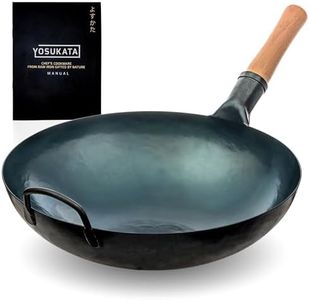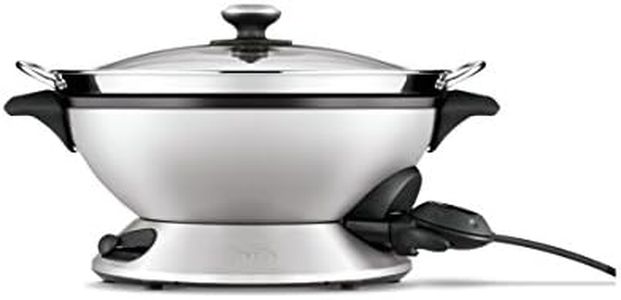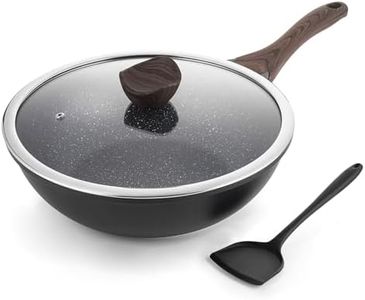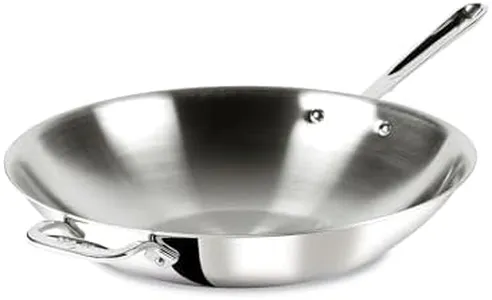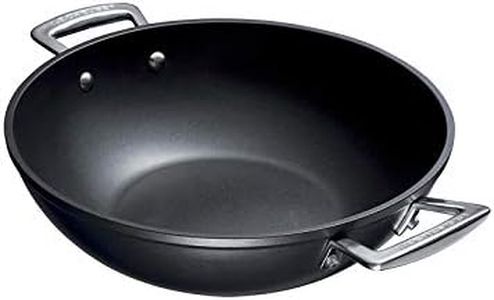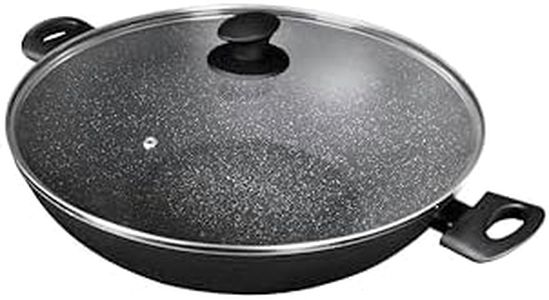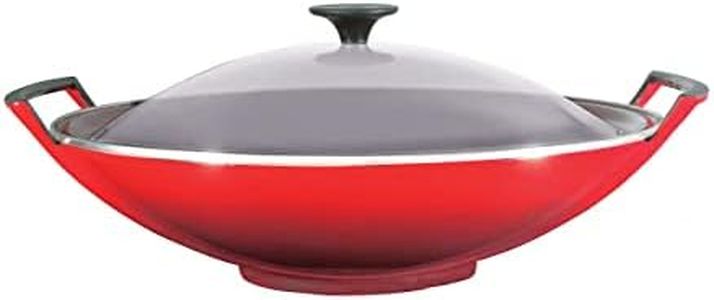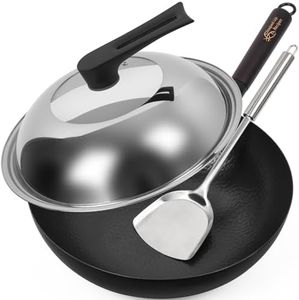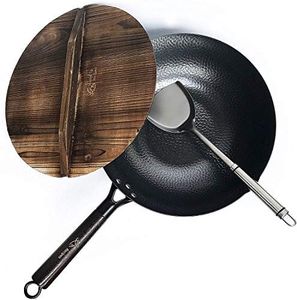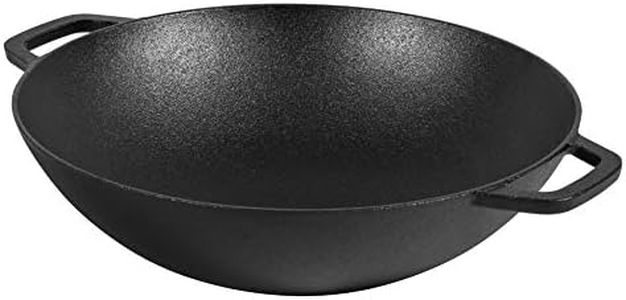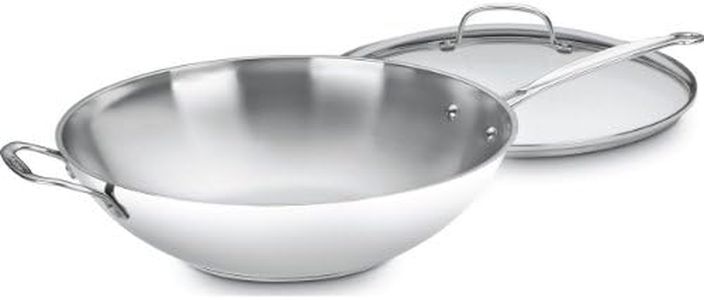We Use CookiesWe use cookies to enhance the security, performance,
functionality and for analytical and promotional activities. By continuing to browse this site you
are agreeing to our privacy policy
10 Best Wok Pans
From leading brands and best sellers available on the web.Buying Guide for the Best Wok Pans
Choosing the right wok pan can make a big difference in your cooking, especially if you enjoy preparing stir-fries, noodles, or dishes that require high heat and quick cooking. Woks come in various materials, shapes, and sizes, and each feature can impact how your food turns out. The key is to think about how you usually cook, how much food you'll be making, and what kind of stove you have.MaterialWok pans are most commonly made from carbon steel, cast iron, stainless steel, and sometimes nonstick materials. The material affects how the wok heats up and how easy it is to care for. Carbon steel is popular because it heats quickly and evenly, making it ideal for stir-frying, but it needs to be seasoned to prevent rust. Cast iron holds heat well but is heavier and requires similar care. Stainless steel doesn't react with food and is easy to clean, but doesn't heat as evenly as carbon steel. Nonstick woks are easier to clean, but they can't handle as high heat and may not last as long. Choose material based on how much effort you want to put into maintenance and what you usually cook—carbon steel is great for authentic cooking, while nonstick is good for convenience.
SizeWok pans come in different diameters, usually ranging from about 10 to 16 inches. The size you pick should match the number of people you usually cook for and the size of your stove. Smaller woks (10-12 inches) are good for one or two people or smaller kitchens. Medium (13-14 inches) works well for small families, while larger woks (15-16 inches) are best if you're cooking for a crowd or love having leftovers. If your stove is small, avoid the biggest woks, as they may not heat evenly.
Shape (Flat Bottom vs. Round Bottom)Woks can have either flat bottoms or round bottoms. Flat-bottom woks are designed for modern kitchen stoves, especially electric or induction types, as they sit flat and make better contact with the heat. Round-bottom woks are traditional and work best on gas stoves with a wok ring to keep them stable. If you have a gas stove or a special wok burner, round bottom is great for tossing food, but if your stove is flat or electric, flat-bottom is the better choice for even heating.
Handle TypeWok pans typically have either two small loop handles (traditional style), a long stick handle like a frying pan, or a combination of both (one long, one small). A long handle makes tossing and stir-frying food easier, especially if you're new to wok cooking. Double-loop handles are good for lifting heavy woks or large amounts of food. Think about your cooking style—if you like to toss your ingredients, go for a wok with at least one long handle.
LidSome woks come with a lid, while others are sold without one. A lid is useful if you plan to steam, braise, or simmer dishes in your wok, not just stir-fry. If you only stir-fry, a lid might not be essential, but if you like to expand your cooking methods, consider a wok that comes with a fitting lid.
WeightThe weight of a wok can affect how easy it is to use, especially if you need to move or toss ingredients while cooking. Lighter woks (often carbon steel) are easier to maneuver, while heavier woks (like cast iron) stay hotter but might be harder to handle, especially when full. If you have wrist or arm strength concerns, go for a lighter wok.
